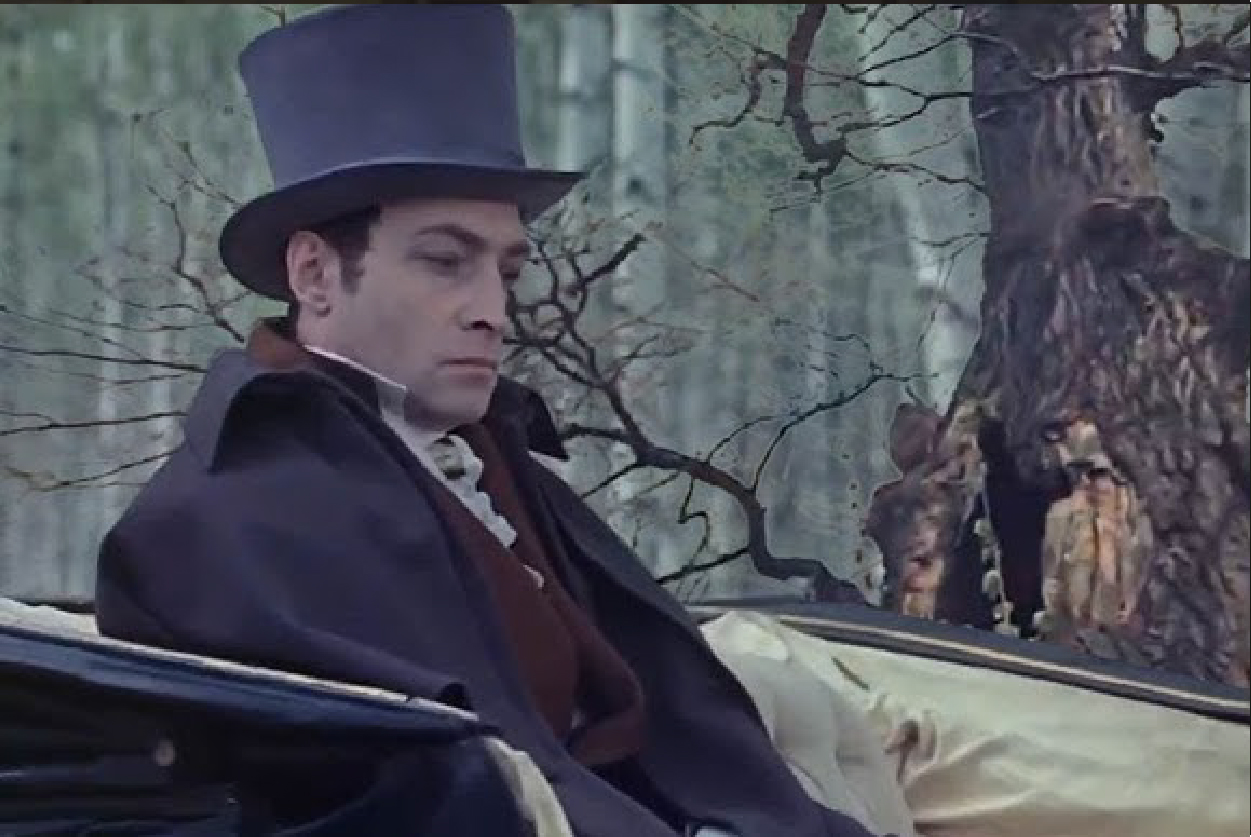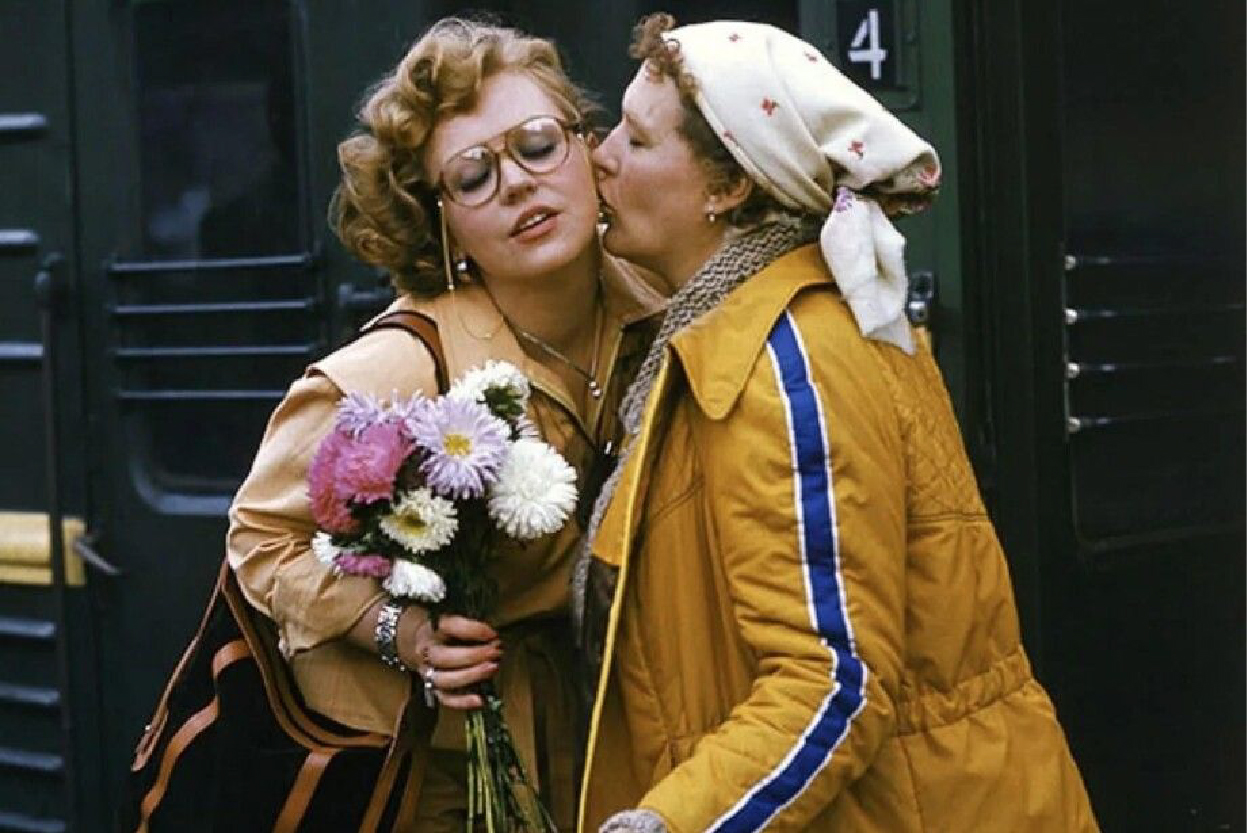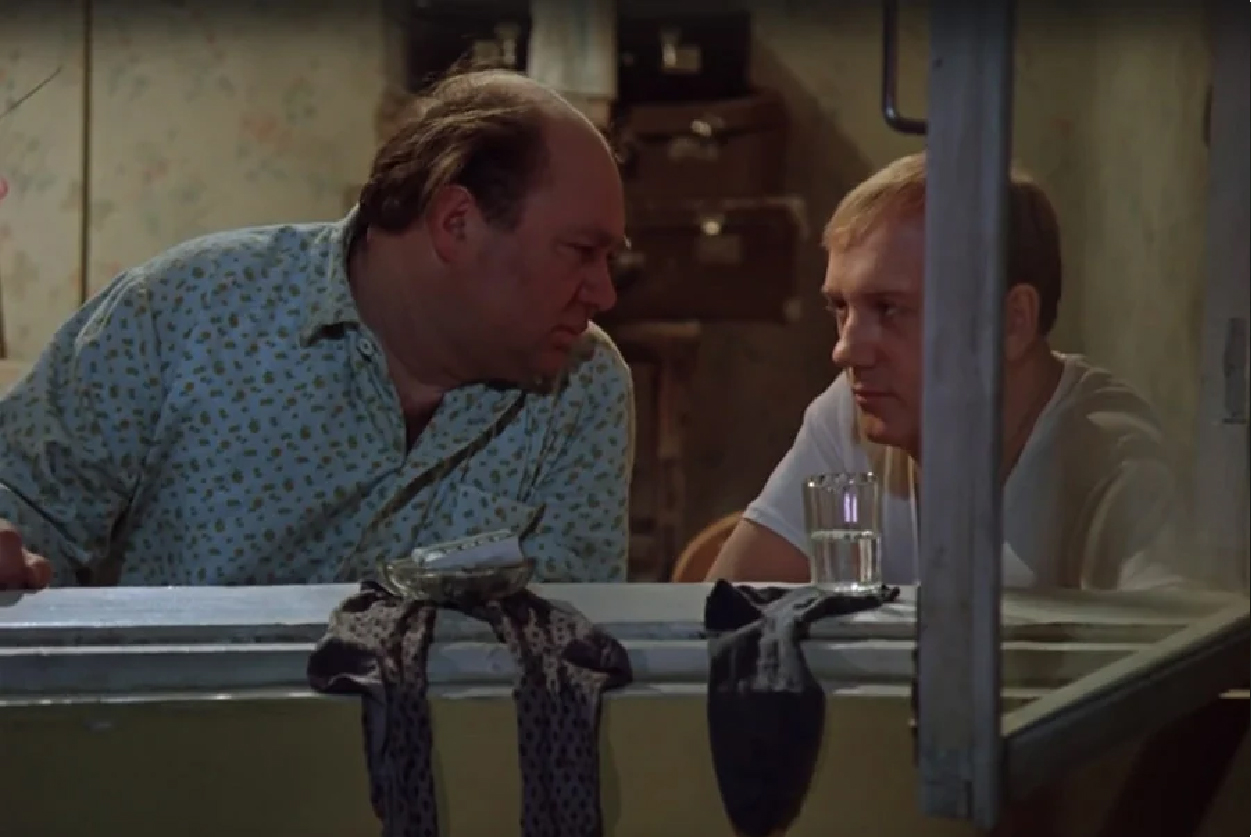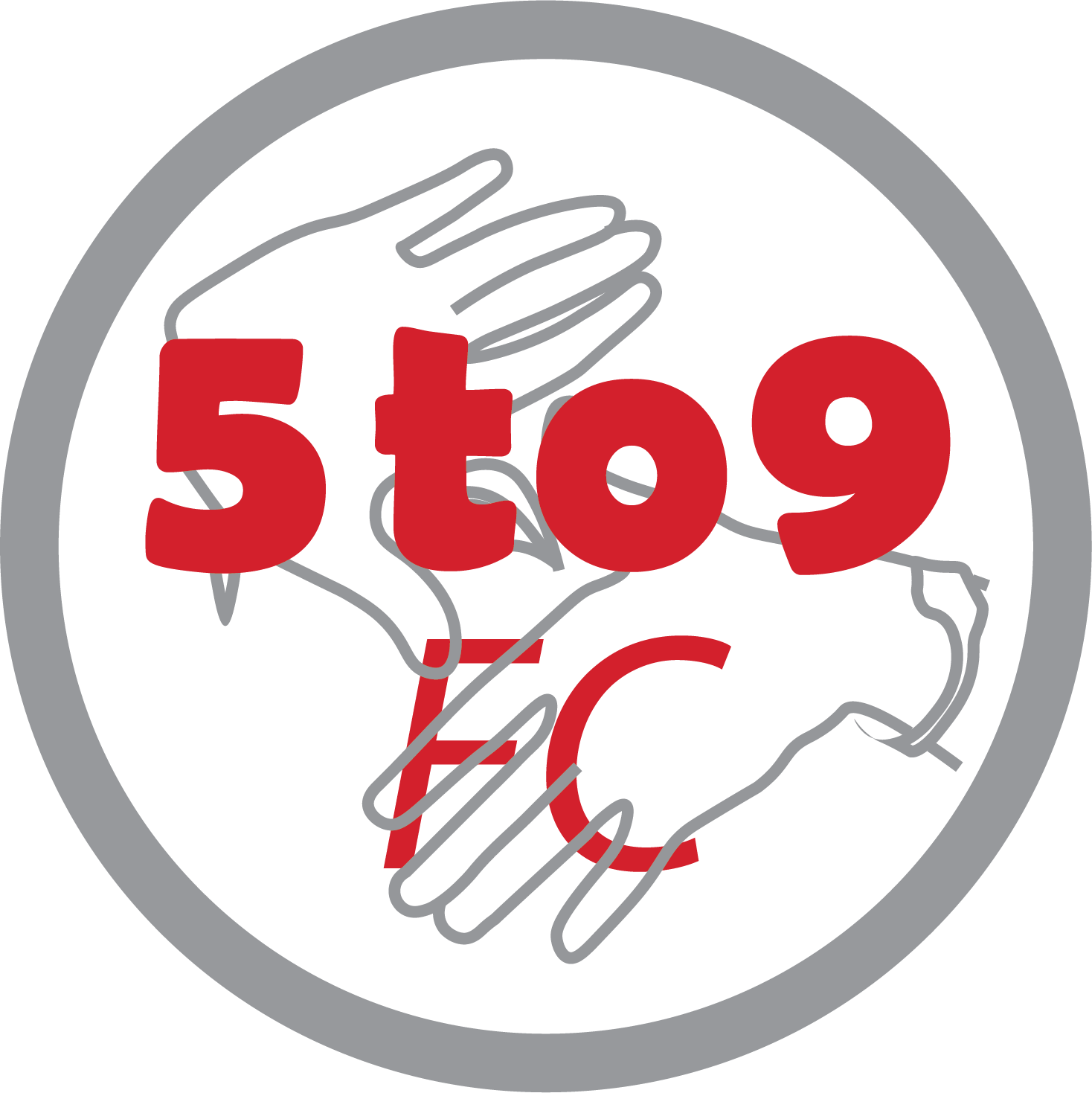21st January 2025
RECORD 22
DANCING AS SELF-EXPRESSION FOR SOVIET FILM CHARACTERS, or ON THE IMPORTANCE OF DANCING
After the avant garde silent and black-and-white films, the 50s masterpiece The Cranes are Flying (1957) (which was the first Soviet film to be awarded with Palme D’or) and the progressive films of the 60s, the Soviet late 70s and 80s are defined with most recognised dramas and comedies to this day (especially comedies). Their characters managed to stick in people’s every day vocabulary ever since more than any other characters from before or after, reflecting complex emotions and situations in very ordinary circumstances. These films paint in bright tones the dull Era of Stagnation as the time sandwiched between more the more memorable 60s Thaw and 90s Perestroika. How does a regular Soviet character can find their place in the world that is not as it has been for their parents and is so unfamiliar yet not defined fully as completely new? What do you do when in the grey area? You (well, they) dance!
![AN INSTAGRAM MEME FROM 2010S]()
Following the memes that has been living on the Internet for a decade at least defining Russian literature as a Pandora box for the existential questions with no answers, the history and literature of XX century didn’t prove itself as an easier time to draw from for films and literature either. So many of Soviet literature and film characters walking, thinking, pining in silence and being often lost or processing things, as their predecessors. Let’s briefly detour to infamous scene in Tolstoy’s War and Peace where Prince Bolkonsky not just talking about an oak tree but actually expressing his torn feelings (textbook lyrical moment and the biggest meme for gen x and millennials on their literature lessons). The favourite characters, whose words people still use when talking to each other and express themselves, struggle in different ways. Whether it’s Vakhtang Kikabidze’s Valiko nicknamed Mimino (eagle in Georgian) while dreaming of a successful pilot career, or Nonna Mordyukova’s Marusya in Family Relations (1981) feeling really out of place while visiting her daughter’s family in the city, or Leonid Kuravlyev’s Afonya in the same-title film from 1975 where its director Georgiy Daneliya traces the steps of a man that not just a bad person but rather experiencing some sort of personal crisis and sabotages his life.
![WAR & PEACE (1965)]()
![MIMINO (1977)]()
![FAMILY RELATIONS (1981)]()
![AFONYA (1975)]()
They don’t seem to have many mates to rumble this over with like Bridget Jones, nor had they pubs in the USSR. They seem to have to deal with it on their own, just like our mental health is being our responsibility. Now, in this writing, it’s too easy to slip into figuring whether it was the society or lack of awareness on mental health to navigate reasons for why these characters struggle. But we are all here for the different reason which is to praise and celebrate how Soviet characters in many comedies across the 70s and 80s take a common element of dance as a way to really express their emotions and explain what is going on and what they really want to say to the world.
What starts as a cry for help for Mariya Vasilyevna in Family Relations (1981) turns into a productive dialogue (in gestures) with her son-in-law Yuri or Tasik who mutably with his wife is separating and is frankly also tired of his mother-in-law petcalling him Tasik ( sounds like basket in Russian) instead of a more respectable name that suits better for his academic status. Both characters seem to be speaking loudly and being clear not trying to slip between the lines as they have previously done a numerous times while having a regular dialogue. Not to mention that neither seem to be knowledgable of dancing nor they try to fit in within the situation as they crush someone else’s wedding dancefloor (a pinnacle of a comedy move). Mother-in-law and her son-in-law are in the public environment of what might seem a fancy restaurant. They are crowded with people, all eyes on them, including the annoying and arrogant waiters. Despite the status quo that both have when talking or interacting with each other in both public places and at home previously, the characters are finally liberated to move the way they want despite the pressure of initially keeping it low (in their own interpretations of it). We are everywhere, up close to both characters from over their shoulders, from afar and even glancing back behind a plant pot from the seat of son-in-law’s assistant or a new girlfriend (who counts). After Yuri wins the dance battle, the audience is ecstatic and clapping, he is quite excited too. It could be a big American moment when in many Hollywood comedies the main characters speaking up about their real feelings and thoughts. But it’s a Soviet comedy, so it all has already happened the moment before. It stops being just an element of the physical comedy and we clearly see the despair and sincerity in the eyes of Yuri as he speaking to his mother-in-law through the microphone as she finally heard him and is leaving the place.
Dance has always been a way to embrace physical comedy and let the characters on screen get loose (or else, into the depths of confusion and anxeity) in the moment for many reasons. It definitely concerns the physical extension to our mental experiences, whether it’s Black Swan (2010), Saturday Night Fever (1977), Pulp Fiction (1994) or Bande A Part (1964). Sometimes quite magically creating a momentum for both the characters on screen and the viewers on this side. With the influence of the French New Wave, Soviet films of the 60s inhabit a more documentary-style realistic appearance as with Walking the Streets of Moscow (1964) or Long Farewells (1971). The last is a much later film but both of them are done by the 60s contemporaries Georgiy Daneliya and Kira Muratova. The streets of Moscow in the first film, just as lively as they seem to be for each dweller every day on their way to work or a party. Most of the times, the Soviet 60s films stay as special experience with their ability to focus on other points in life than other films of the era from the before and after.
![GEORGIY DANELIYA]()
No wonder that in Daneliya’s later film Afonya (1975), we face again a number of dancing scenes just as with his earlier films but in the different circumstances. One of these sequences starts with a close up of the band performing at a local restaurant. They take an upbeat couplets and senselessly slow them down to some evening lounge tune without changing the core lyrics. Then we see a claustrophobic close up of Afonya’s face being expressive in his dance and then the camera zooms out just to figure that he is the only person dancing and mildly ignored by other guests of the restaurant. A misfit, the way he is at work and in his social life. But what a pleasure it is for him. Despite the possible public judgement he demands for the all-female band to keep playing, as he finally gets to dance the way he wants since at the last dance party it hasn’t been the case (spoiler! He got beaten up). And he keeps spreading his hands wide and freely as the lady with an according keeps singing ‘don’t tell me off at home, I’ve done nothing to be told off for’.
Similarly, two other misfits (also directed by Daneliya) that are displaced far away from their home Valiko and Rubik (from Mimino (1977) ), who are visiting Moscow, are caught up over the dinner at Rossiya hotel that they stay at by the band that greets them with a Georgian and an Armenian national songs. Again, physical comedy is catching up just with a click of a montage (yes, could be a reference to Eisenstein and Vetrov) we see two characters having a dance battle, which is way more pleasant and utterly relatable than the constant demure silences (as a signature element and a strong stereotype about Eastern European and post Soviet communities still). Although it does stay as a secondary to it, when our primary focus is fixated on Valiko actually being expressing for the first and the last time in the film (apart from the fight that leads to the court hearing as a paramount of things he has been wanting to say but would rather save his breath). Other than that, the characters either slowly walking or thinking or waiting (for something), essentially living some may say.
Sometimes they talk and dance, as with Love and Doves (1984). Another classic, a stage-to-screen comedy directed by an Oscar winner Vladimir Menshov (for his 1981 film Moscow Does Not Believe in Tears), when in her happy dance Nadya talks to her neighbour expressing that she is settled on leaving her cheating husband and she feels the best about it.
On the basis of the cultural code of War & Peace and Crime & Punishment and in the moments when a solution doesn’t give a clue on when it will make itself present, dancing as a physical comedy appears almost as a confessional act and a successor to the momentums that acclaimed film directors build on to help their characters move forward and express complexity that they possibility don’t want to admit or don’t simply have the right words for. Note to the future self (on the importance of dancing) and on how (even as a comedy) a Soviet film touches on existential issues still.
FILMS MENTIONED:
Family Relations (1981) dir. by Nikita Mikhalkov
Mimino (1977) dir. by Georgiy Daneliya
Afonya (1975) dir. by Georgiy Daneliya
Love and Doves (1985) dir. by Vladimir Menshov
OTHER FILMS MENTIONED:
Walking the Streets of Moscow (1964) dir. by Georgiy Daneliya
Long Farewells (1971) dir. by Kira Muratova
The Cranes are Flying (1957) dir. by Mikhail Kolotozov
War & Peace (1965) dir. by Sergei Bondarchuk
Moscow Does Not Believe in Tears (1981) dir. by Vladimir Menshov
Bridget Jones’s Diary (2000)
Black Swan (2010) dir. by Darren Aranofsky
Saturday Night Fever (1977) dir. by
Pulp Fiction (1994) dir. by Quentin Tarantino
Bande A Part (1964) dir. by jean Luc Godard
RECORD 22
DANCING AS SELF-EXPRESSION FOR SOVIET FILM CHARACTERS, or ON THE IMPORTANCE OF DANCING
After the avant garde silent and black-and-white films, the 50s masterpiece The Cranes are Flying (1957) (which was the first Soviet film to be awarded with Palme D’or) and the progressive films of the 60s, the Soviet late 70s and 80s are defined with most recognised dramas and comedies to this day (especially comedies). Their characters managed to stick in people’s every day vocabulary ever since more than any other characters from before or after, reflecting complex emotions and situations in very ordinary circumstances. These films paint in bright tones the dull Era of Stagnation as the time sandwiched between more the more memorable 60s Thaw and 90s Perestroika. How does a regular Soviet character can find their place in the world that is not as it has been for their parents and is so unfamiliar yet not defined fully as completely new? What do you do when in the grey area? You (well, they) dance!

Following the memes that has been living on the Internet for a decade at least defining Russian literature as a Pandora box for the existential questions with no answers, the history and literature of XX century didn’t prove itself as an easier time to draw from for films and literature either. So many of Soviet literature and film characters walking, thinking, pining in silence and being often lost or processing things, as their predecessors. Let’s briefly detour to infamous scene in Tolstoy’s War and Peace where Prince Bolkonsky not just talking about an oak tree but actually expressing his torn feelings (textbook lyrical moment and the biggest meme for gen x and millennials on their literature lessons). The favourite characters, whose words people still use when talking to each other and express themselves, struggle in different ways. Whether it’s Vakhtang Kikabidze’s Valiko nicknamed Mimino (eagle in Georgian) while dreaming of a successful pilot career, or Nonna Mordyukova’s Marusya in Family Relations (1981) feeling really out of place while visiting her daughter’s family in the city, or Leonid Kuravlyev’s Afonya in the same-title film from 1975 where its director Georgiy Daneliya traces the steps of a man that not just a bad person but rather experiencing some sort of personal crisis and sabotages his life.




They don’t seem to have many mates to rumble this over with like Bridget Jones, nor had they pubs in the USSR. They seem to have to deal with it on their own, just like our mental health is being our responsibility. Now, in this writing, it’s too easy to slip into figuring whether it was the society or lack of awareness on mental health to navigate reasons for why these characters struggle. But we are all here for the different reason which is to praise and celebrate how Soviet characters in many comedies across the 70s and 80s take a common element of dance as a way to really express their emotions and explain what is going on and what they really want to say to the world.
What starts as a cry for help for Mariya Vasilyevna in Family Relations (1981) turns into a productive dialogue (in gestures) with her son-in-law Yuri or Tasik who mutably with his wife is separating and is frankly also tired of his mother-in-law petcalling him Tasik ( sounds like basket in Russian) instead of a more respectable name that suits better for his academic status. Both characters seem to be speaking loudly and being clear not trying to slip between the lines as they have previously done a numerous times while having a regular dialogue. Not to mention that neither seem to be knowledgable of dancing nor they try to fit in within the situation as they crush someone else’s wedding dancefloor (a pinnacle of a comedy move). Mother-in-law and her son-in-law are in the public environment of what might seem a fancy restaurant. They are crowded with people, all eyes on them, including the annoying and arrogant waiters. Despite the status quo that both have when talking or interacting with each other in both public places and at home previously, the characters are finally liberated to move the way they want despite the pressure of initially keeping it low (in their own interpretations of it). We are everywhere, up close to both characters from over their shoulders, from afar and even glancing back behind a plant pot from the seat of son-in-law’s assistant or a new girlfriend (who counts). After Yuri wins the dance battle, the audience is ecstatic and clapping, he is quite excited too. It could be a big American moment when in many Hollywood comedies the main characters speaking up about their real feelings and thoughts. But it’s a Soviet comedy, so it all has already happened the moment before. It stops being just an element of the physical comedy and we clearly see the despair and sincerity in the eyes of Yuri as he speaking to his mother-in-law through the microphone as she finally heard him and is leaving the place.
Dance has always been a way to embrace physical comedy and let the characters on screen get loose (or else, into the depths of confusion and anxeity) in the moment for many reasons. It definitely concerns the physical extension to our mental experiences, whether it’s Black Swan (2010), Saturday Night Fever (1977), Pulp Fiction (1994) or Bande A Part (1964). Sometimes quite magically creating a momentum for both the characters on screen and the viewers on this side. With the influence of the French New Wave, Soviet films of the 60s inhabit a more documentary-style realistic appearance as with Walking the Streets of Moscow (1964) or Long Farewells (1971). The last is a much later film but both of them are done by the 60s contemporaries Georgiy Daneliya and Kira Muratova. The streets of Moscow in the first film, just as lively as they seem to be for each dweller every day on their way to work or a party. Most of the times, the Soviet 60s films stay as special experience with their ability to focus on other points in life than other films of the era from the before and after.

No wonder that in Daneliya’s later film Afonya (1975), we face again a number of dancing scenes just as with his earlier films but in the different circumstances. One of these sequences starts with a close up of the band performing at a local restaurant. They take an upbeat couplets and senselessly slow them down to some evening lounge tune without changing the core lyrics. Then we see a claustrophobic close up of Afonya’s face being expressive in his dance and then the camera zooms out just to figure that he is the only person dancing and mildly ignored by other guests of the restaurant. A misfit, the way he is at work and in his social life. But what a pleasure it is for him. Despite the possible public judgement he demands for the all-female band to keep playing, as he finally gets to dance the way he wants since at the last dance party it hasn’t been the case (spoiler! He got beaten up). And he keeps spreading his hands wide and freely as the lady with an according keeps singing ‘don’t tell me off at home, I’ve done nothing to be told off for’.
Similarly, two other misfits (also directed by Daneliya) that are displaced far away from their home Valiko and Rubik (from Mimino (1977) ), who are visiting Moscow, are caught up over the dinner at Rossiya hotel that they stay at by the band that greets them with a Georgian and an Armenian national songs. Again, physical comedy is catching up just with a click of a montage (yes, could be a reference to Eisenstein and Vetrov) we see two characters having a dance battle, which is way more pleasant and utterly relatable than the constant demure silences (as a signature element and a strong stereotype about Eastern European and post Soviet communities still). Although it does stay as a secondary to it, when our primary focus is fixated on Valiko actually being expressing for the first and the last time in the film (apart from the fight that leads to the court hearing as a paramount of things he has been wanting to say but would rather save his breath). Other than that, the characters either slowly walking or thinking or waiting (for something), essentially living some may say.
Sometimes they talk and dance, as with Love and Doves (1984). Another classic, a stage-to-screen comedy directed by an Oscar winner Vladimir Menshov (for his 1981 film Moscow Does Not Believe in Tears), when in her happy dance Nadya talks to her neighbour expressing that she is settled on leaving her cheating husband and she feels the best about it.
On the basis of the cultural code of War & Peace and Crime & Punishment and in the moments when a solution doesn’t give a clue on when it will make itself present, dancing as a physical comedy appears almost as a confessional act and a successor to the momentums that acclaimed film directors build on to help their characters move forward and express complexity that they possibility don’t want to admit or don’t simply have the right words for. Note to the future self (on the importance of dancing) and on how (even as a comedy) a Soviet film touches on existential issues still.
FILMS MENTIONED:
Family Relations (1981) dir. by Nikita Mikhalkov
Mimino (1977) dir. by Georgiy Daneliya
Afonya (1975) dir. by Georgiy Daneliya
Love and Doves (1985) dir. by Vladimir Menshov
OTHER FILMS MENTIONED:
Walking the Streets of Moscow (1964) dir. by Georgiy Daneliya
Long Farewells (1971) dir. by Kira Muratova
The Cranes are Flying (1957) dir. by Mikhail Kolotozov
War & Peace (1965) dir. by Sergei Bondarchuk
Moscow Does Not Believe in Tears (1981) dir. by Vladimir Menshov
Bridget Jones’s Diary (2000)
Black Swan (2010) dir. by Darren Aranofsky
Saturday Night Fever (1977) dir. by
Pulp Fiction (1994) dir. by Quentin Tarantino
Bande A Part (1964) dir. by jean Luc Godard
Thank you for reading!
Yours,
5TO9 FC TEAM
